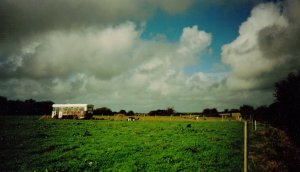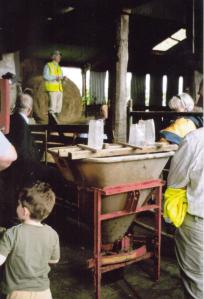Continuing on from my previous post, I am uploading a few more of the photos I took as part of the data collection for my PhD research on the Irish organic food movement.
In the case of the organic food movement, the ideology that inspires producers and consumers can best be described as one based around the ideas of biodiversity and coexistence. This translates, practically, into everyday attempts at finding ways of producing, transporting, and consuming food, that do not endanger other species. It requires practical experimentation and ingenuity. It leads to flexibility, openness, and a whole new approach to farming. But, what does it look like?
Below are a couple of images taken during my PhD research on organic farms. I suggest they represent some of the values and beliefs of the organic movement.

Fig 1. ‘Weeds’ and ‘wildflowers’ grow side by side with the cultivated crop on an organic farm, Co Cork. Despite being a commercially successful enterprise, and a farm selected by Teagasc for the national series of open days, the farmer here contributes an alternative meaning to wild plants, and proudly points them out to visitors to the farm as a ‘proof’ of the success of his attempts at preserving local biodiversity.

Fig 2 & 3. An old bus sits, apparently abandoned, in the middle of an organic pasture. However, upon closer inspection, we can see that the bus has been converted to house a flock of laying hens, that roam the farm during the day. It thus reflects both the concern for the welfare of food animals we find among organic producers (allowing for truly free range egg production), and the sort of inventions through trial and error that characterise many organic enterprises.
For more information on this project, or for copies of the relevant thesis chapters, leave a comment here or send me a mail.



